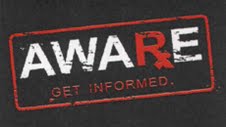Prevent Prescription Drug Abuse: Become AWARE

To provide a convenient means of safe drug disposal and help curb abuse, in conjunction with the National Association of Boards of Pharmacy Foundation (NABP) and their AWARxE Consumer Protection Program, the DEA is hosting a Take-Back Day on April 27, 2013. Consumers can safely and legally dispose of any unneeded medications, anonymously and for free. Held from 10 AM to 2 PM on April 27, 2013, the event is one of the few days of the year where residents can drop off expired or unused prescription medications without having to wonder whether they will be accepted—even controlled substances, such as ADHD drugs and certain prescription pain medications, are collected.
To help spread the word about the DEA Take-Back Day and drug disposal awareness, I had the opportunity to interview the Executive Director of NABP, Dr. Carmen Catizone.
1) Even if parents properly store and dispose of their medications, how can they ensure their children aren’t getting prescription drugs elsewhere (i.e. neighbors or grandparents)?
Dr. Catizone:
To help prevent children’s misuse or abuse of prescription drugs, an important step is to talk with them about the serious dangers of prescription drug abuse. This step is important as many teens do not realize that abusing prescription drugs is just as dangerous as using illicit drugs. For example, a recent survey revealed that less than 36% of 8th grade students see occasional nonmedical use of Vicodin or OxyContin as a great risk. However, most 8th grade students perceive regular marijuana use and occasional heroin use as a great risk.
There are many resources on AWARErx.org that can help initiate conversations with your children. For teens, a video recommended by AWARXE, called The Road to Nowhere, tells the story of a teen who experimented with prescription drugs at a party and became addicted to the drugs. A link to the video is available on the AWARXE Get Local Oklahoma page. Also, the AWARXE Student page includes resources for elementary school students, as well as for middle school and high school students.
2) What is the best way to help prevent children from getting medications from their friends?
Dr. Catizone:
As noted above, educating your children on the dangers of misusing prescription drugs is critical. If you are concerned that your child may be misusing medications obtained from friends, you may also want to watch out for warning signs of abuse. Some side effects associated with abusing prescription drugs include dizziness, loss of appetite, unconsciousness, impaired memory, mood swings, loss of motor coordination, trouble breathing and rapid or irregular heartbeat.
In addition to watching for side effects, you may want to keep a close eye on medications stored in your home. Keep an inventory of the number of pills so that you can determine if any are missing.
3) Many people carry their prescriptions around with them on a daily basis. What is the best way to secure medications in purses and other bags?
Dr. Catizone:
Good question! As with storage of medications kept in the home, you can also remind babysitters, houseguests, and visitors to keep purses, bags, or coats that have medicines in them out of sight and out of reach of children when they are in your home. Also, locking medicine bags small enough to fit in a purse are available from some companies and may be a good option for frequent visitors to your home.
Medicines store in the home should be locked up when possible. For example, you may want to lock your medications in a cupboard or a medicine safe, especially to avoid unintentional use by your child or misuse by family or visitors to your home. You may want to offer a secure, locked storage place for visitors’ bags, purses, or medications while they are staying in your home.
4) I imagine some teachers carry their medications on them. Have students ever stolen their meds in the classroom?
Dr. Catizone:
We are not aware of studies showing that teens are stealing medications from teachers. Studies indicate that most teens abusing prescription drugs obtain them from friends and family. For example, the most recent Monitoring the Future Survey, which surveys over 45,000 high school students, showed that in 2012, family and friends were the predominant source of prescription drugs for teens who abuse them.
5) What is the best way to talk to your child if you think they are abusing prescription medications?
Dr. Catizone:
If teens are in need of help, a school’s guidance counselor can also be an excellent resource for local information.
Seeking advice and assistance from your family health care provider, such as your doctor is also recommended. Your doctor can provide information and/or referrals to local programs that help identify abuse and treat addiction.
The Substance Abuse and Mental Health Services Administration provides an online substance abuse treatment locator and links to resources about addiction and treatment on its Web site.
Links for cited Web pages:
- AWARXE Get Local Oklahoma: http://www.awarerx.org/get-local/oklahoma
- AWARXE Medication Disposal: www.awarerx.org/get-informed/find-disposal-information
- Substance Abuse and Mental Health Services Administration online treatment locator: http://findtreatment.samhsa.gov/TreatmentLocator/faces/quickSearch.jspx
- AWARXE Student page: www.awarerx.org/students
- “Regular Marijuana Use By Teens Continues to be a Concern: NIDA’s 2012 Monitoring the Future survey shows rates stable or down for most drugs,” National Institute of Health: http://www.nih.gov/news/health/dec2012/nida-19.htm


